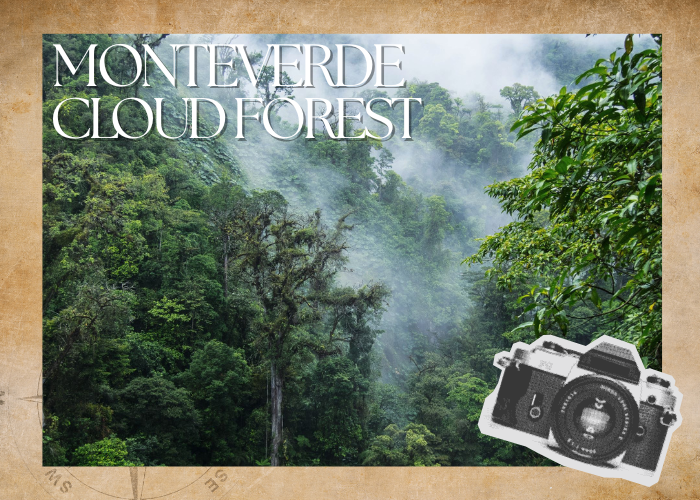There is an abundance of geographical places with unique beauty, but unlike the Monteverde Cloud Forest, they don’t host as many places and animals. This forest is located between the provinces of Puntarenas and Alajuela, along a beautiful mountain range in Costa Rica.
Initially, the forest became formally protected with the founding of the Monteverde Cloud Forest Reserve in 1972. The foundation was driven by George and Harriet Powell, a couple who used their PhDs to study the surrounding areas.
Located in Costa Rica, the forest lies along the Cordillera de Tilarán mountain range, which stretches 68 miles in length, containing a series of stratovolcanoes.
The Monteverde Forest itself, also known as “The World of a Thousand Greens,” covers 26,000 acres of land. It’s known for having very dense, misty forests, partly due to its high-elevation tropical climate and very moist Atlantic air.
Not only does this forest hold great beauty, but it also harbors several ecosystems. As of now, there are over 500 species of animals, 3,200 species of plants, and up to tens of thousands of species of insects. Some reports even state that Monteverde harbors around half of all the insect species found within Costa Rica.
Some animals that reside in this forest include White-Faced Capuchin Monkeys, Mexican Porcupines, and Coatimundis, also known as “Nose Bears,” which, despite their name, are part of the raccoon family rather than the bear family. It is also home to a lovely creature: the Costa Rican Redleg Tarantula. These arachnids can grow to have a leg span of 6 to 7 inches. They have velvety black bodies and bright, red-tipped legs. The overall environment of Monteverde is exceptional for animals due to consistent moisture and high elevation, though it is currently under threat from climate change.
The trees that occupy the Monteverde Cloud Forest are part of what gives the area such beauty and vitality. Costa Rican Oak Trees, Cecropia Trees, and Guanacaste Trees are all vital life forms within the forest. However, one strange tree stands above all: the Strangler Fig Tree. They start as epiphytes and then, over time, send roots through the host tree and into the ground, essentially “strangling” and overtaking the host. Afterward, the host tree will slowly decay, and a lattice-like structure will form while containing a hollow interior. They are crucial to the ecosystem as they provide food and shelter for surrounding animals.
The Monteverde Cloud Forest is explorable as well, both alone and in a group. There are many sights to see and things to explore, with activities like hiking, ziplining, and viewpoints from canopy bridges.
















